The History of Banff Hot Springs, Canada, is a fascinating tale of natural wonder, human discovery, and cultural significance that shaped the nation’s first national park. Nestled in the heart of the Canadian Rockies, these thermal springs on Sulphur Mountain were first uncovered by Canadian Pacific Railway workers in 1883, sparking a chain of events that led to the creation of Banff National Park in 1885. Initially known as the Banff Hot Springs Reserve, this site not only highlights Canada’s commitment to preserving its natural treasures but also reflects the area’s deep Indigenous roots, dating back over 10,000 years. From early commercial ventures to modern-day relaxation spots like the Banff Upper Hot Springs, the story blends geology, history, and tourism into a compelling narrative.
Today, the Banff Hot Springs remain a top attraction, drawing millions to soak in their mineral-rich waters while soaking up breathtaking views of Mount Rundle and the surrounding peaks. This guide dives deep into the timeline, key milestones, and cultural impacts of the springs, offering a comprehensive look at their evolution. Whether you’re a history buff or planning a visit, you’ll find everything you need to know about the History of Banff Hot Springs, Canada, right here—optimized for easy reading and packed with unique insights.
Why the History of Banff Hot Springs Matters
Understanding the History of Banff Hot Springs, Canada, gives context to why this site holds such a special place in the country’s heritage. It’s not just about hot water bubbling up from the earth; it’s about how this natural phenomenon kickstarted Canada’s national park system. Plus, it’s a story of conflict, conservation, and clever engineering that still resonates today. Let’s break it down with some detailed lists and tables to keep things clear and engaging.
Timeline of the History of Banff Hot Springs, Canada
Here’s a chronological rundown of the major events that define the History of Banff Hot Springs, Canada. This timeline captures the key moments that turned a hidden geothermal gem into a national icon.
- Pre-1883: Indigenous Presence
- Indigenous peoples, including the Stoney Nakoda and Ktunaxa, use the springs for healing and spiritual purposes for over 10,000 years.
- The site remains a sacred gathering place long before European contact.
- 1883: Discovery by Railway Workers
- Three Canadian Pacific Railway workers—Frank McCabe and brothers William and Tom McCardell—stumble upon the Cave and Basin Hot Springs.
- They descend into the cave using a felled tree, sparking national interest.
- 1885: Birth of Banff National Park
- Ownership disputes arise, prompting the Canadian government to establish the Banff Hot Springs Reserve.
- This 26-square-kilometer area becomes Canada’s first national park, initially called Rocky Mountains Park.
- 1886: Early Development Begins
- Construction starts on the Grand View Villa and a basic log bathhouse at the Upper Hot Springs.
- Dr. Robert Gordon Brett builds these structures with government approval.
- 1887: Official Park Status
- The Rocky Mountains Park Act formalizes the park’s status, expanding its boundaries.
- Tourism begins to grow, fueled by the Canadian Pacific Railway’s promotion.
- 1901 & 1931: Fires at Grand View Villa
- The Grand View Villa burns down twice, leading to rebuilds each time.
- The federal government acquires the property after the second fire.
- 1904: Government Facility at Upper Hot Springs
- The government constructs plunge basins, bathtubs, and a swimming basin near today’s Rimrock Resort.
- This marks the start of formalized public access.
- 1915: Road Access Opens
- Upper Hot Springs road opens to motorists, boosting visitor numbers.
- Accessibility transforms the springs into a mainstream attraction.
- 1932: Bathhouse Modernization
- A new bathhouse opens at the Upper Hot Springs with sulphur pools, steam rooms, and more.
- The government aims to rival international spas with these upgrades.
- 1981: Cave and Basin Historic Designation
- The Cave and Basin site earns National Historic Site status, recognizing its role in park history.
- Swimming is discontinued here, but it remains open for education.
- 1996: Upper Hot Springs Renovation
- The bathhouse gets a major facelift, adding a spa, restaurant, and gift shop.
- Visitor numbers soar past 300,000 annually.
- Present Day: A UNESCO Treasure
- Banff National Park, including the hot springs, is part of a UNESCO World Heritage Site.
- The Upper Hot Springs remains a top draw for relaxation and history.
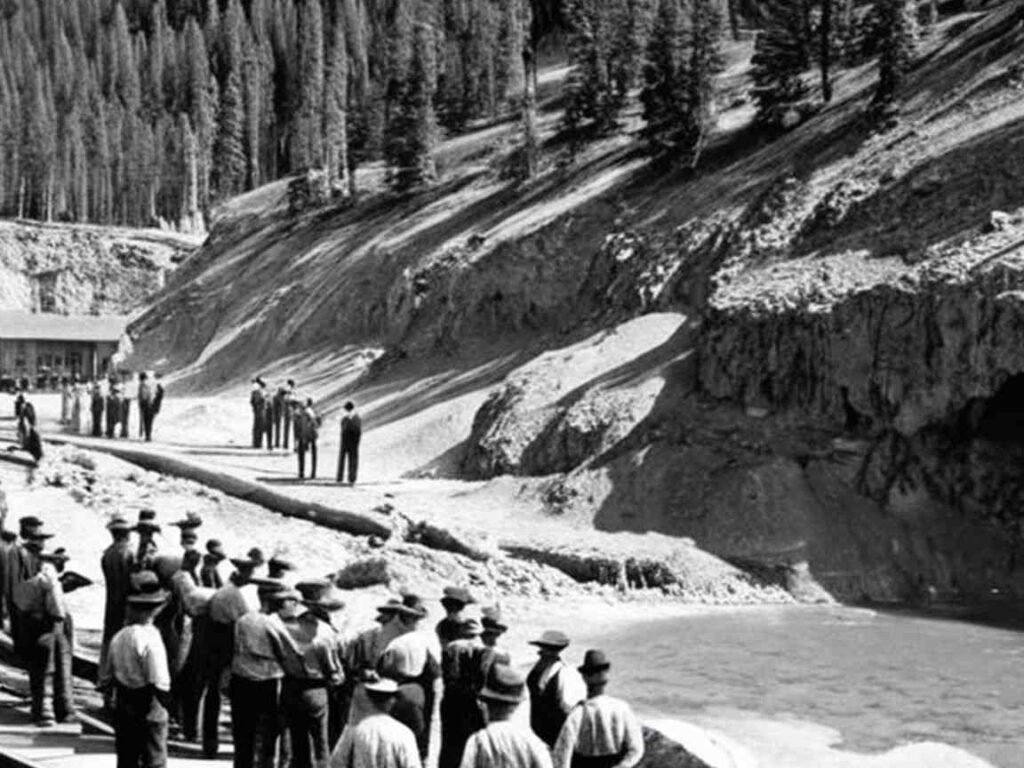
Key Players in the History of Banff Hot Springs, Canada
The History of Banff Hot Springs, Canada, wouldn’t be complete without the people who shaped it. Here’s a list of the most influential figures and their contributions.
- Frank McCabe
- Role: One of the three railway workers who discovered the Cave and Basin.
- Impact: His find triggered the park’s creation, though he later sold his claim for $675.
- William and Tom McCardell
- Role: Brothers and co-discoverers with McCabe.
- Impact: William lived at the site to protect their claim, pushing government intervention.
- William Cornelius Van Horne
- Role: General Manager of the Canadian Pacific Railway.
- Impact: Pushed for the park’s establishment and built the Banff Springs Hotel to boost tourism.
- John A. Macdonald
- Role: Canadian Prime Minister in 1885.
- Impact: Authorized the Hot Springs Reserve, laying the groundwork for national parks.
- Dr. Robert Gordon Brett
- Role: Early developer of the Upper Hot Springs.
- Impact: Built the Grand View Villa, kickstarting commercial use of the springs.
- Parks Canada
- Role: Modern stewards of the hot springs.
- Impact: Preserves and manages the sites, balancing tourism with conservation.
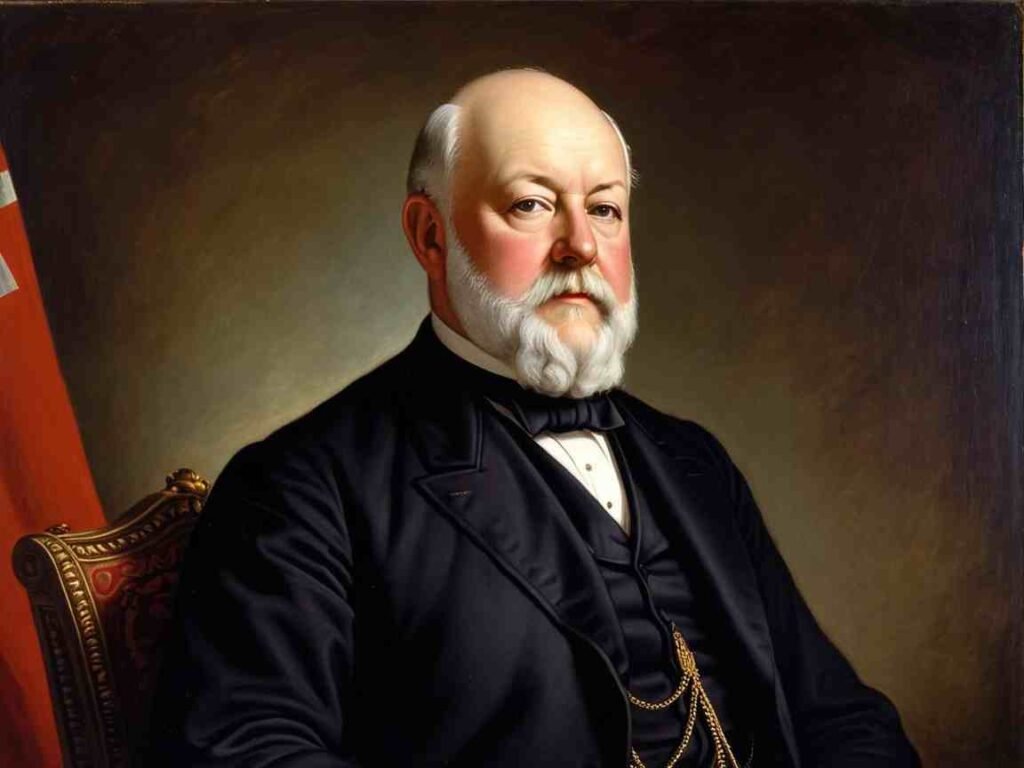
Major Developments in Banff Hot Springs Infrastructure
The infrastructure around the Banff Hot Springs evolved significantly over time. Here’s a table detailing the major upgrades and their impact on the History of Banff Hot Springs, Canada.
| Year | Development | Details | Impact |
|---|---|---|---|
| 1886 | Grand View Villa & Bathhouse | Log shack and villa built at Upper Hot Springs by Dr. Brett. | First commercial access to the springs. |
| 1904 | Government Bathing Facility | Two plunge basins, bathtubs, and a swimming basin added near Rimrock site. | Improved public access and hygiene. |
| 1915 | Upper Hot Springs Road | Road opens to vehicles, replacing horse-drawn travel. | Boosted tourism significantly. |
| 1932 | Modern Bathhouse | Sulphur pool, steam rooms, and dressing rooms added. | Elevated the springs to a luxury spa. |
| 1961 | Bathhouse Reconstruction | Large basin rebuilt with interior updates. | Enhanced visitor comfort. |
| 1996 | Spa and Amenities Upgrade | Spa, restaurant, and gift shop added to Upper Hot Springs. | Modernized the experience for tourists. |
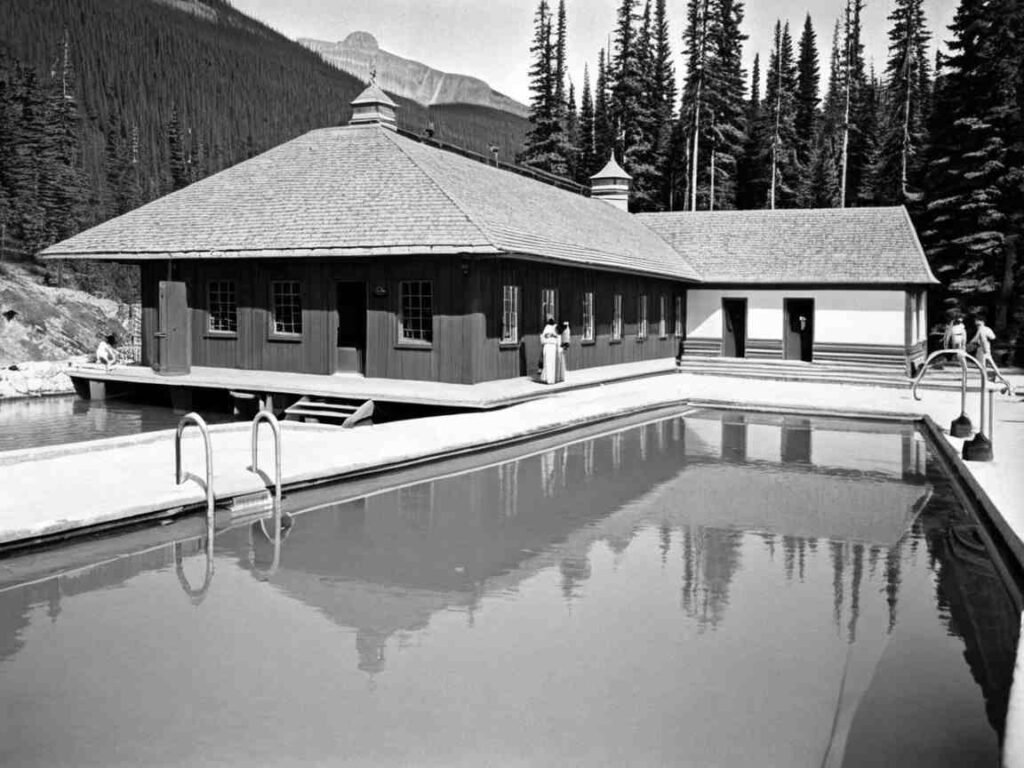
Cultural Significance of Banff Hot Springs Through History
The springs aren’t just a geological marvel—they’ve held deep meaning for various groups. Here’s how their cultural role evolved in the History of Banff Hot Springs, Canada.
- Indigenous Sacred Site
- Used by nations like the Stoney Nakoda for millennia as a healing and spiritual hub.
- Remains a place of cultural importance today.
- European Health Craze
- In the late 19th century, visitors flocked to “take the cure” in the mineral waters.
- Claims ranged from curing rheumatism to treating gunshot wounds.
- Tourism Boom
- The Canadian Pacific Railway marketed the springs as a luxury destination in the 1880s.
- This shift turned Banff into a global travel hotspot.
- Conservation Milestone
- The springs’ protection in 1885 set a precedent for Canada’s national park system.
- It’s a symbol of balancing nature and human use.
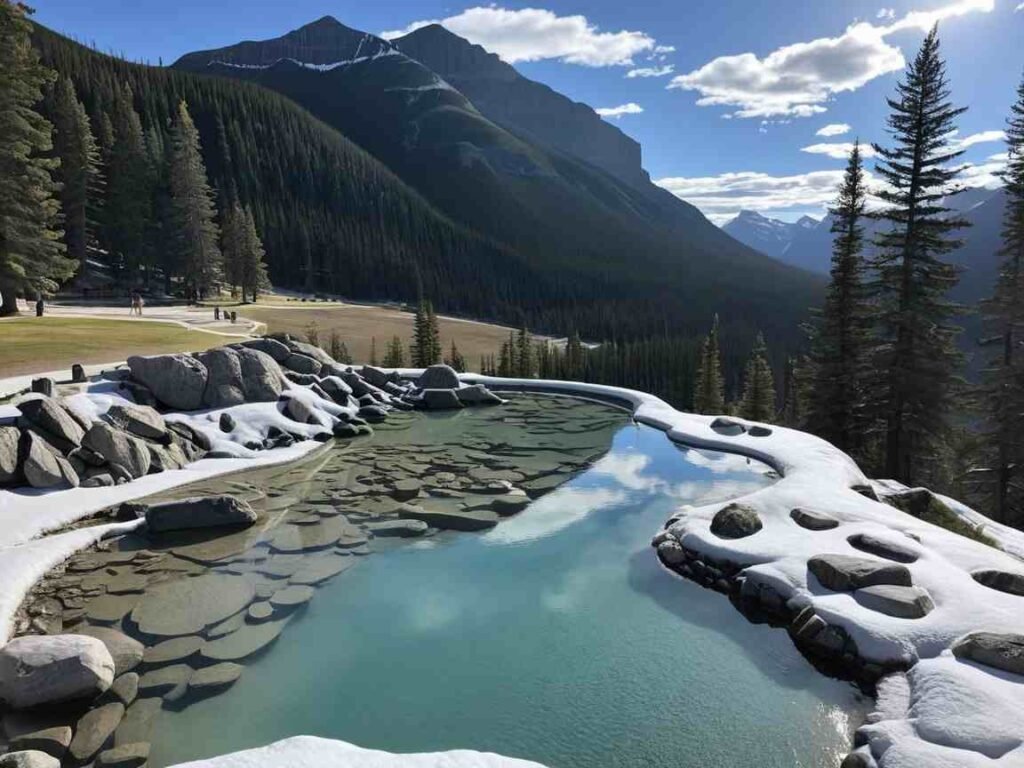
Geological Facts Behind Banff Hot Springs
The hot springs owe their existence to unique geology. Here’s a list of key facts that tie into the History of Banff Hot Springs, Canada.
- Source of Heat
- Water is heated geothermally, traveling over 3 kilometers underground.
- Temperatures reach up to 47°C (116°F) naturally.
- Sulphur Mountain Thrust Fault
- A massive crack in the rock allows water to surface from Mount Rundle and Sulphur Mountain.
- This fault is the backbone of the springs’ flow.
- Mineral Content
- Rich in sulphate, calcium, and magnesium, giving the water its signature smell and health claims.
- Each spring on Sulphur Mountain varies slightly in composition.
- Seasonal Flow
- Peaks at 900 liters per minute in spring, drops to 500 in winter.
- Municipal water supplements the pool during low-flow periods.
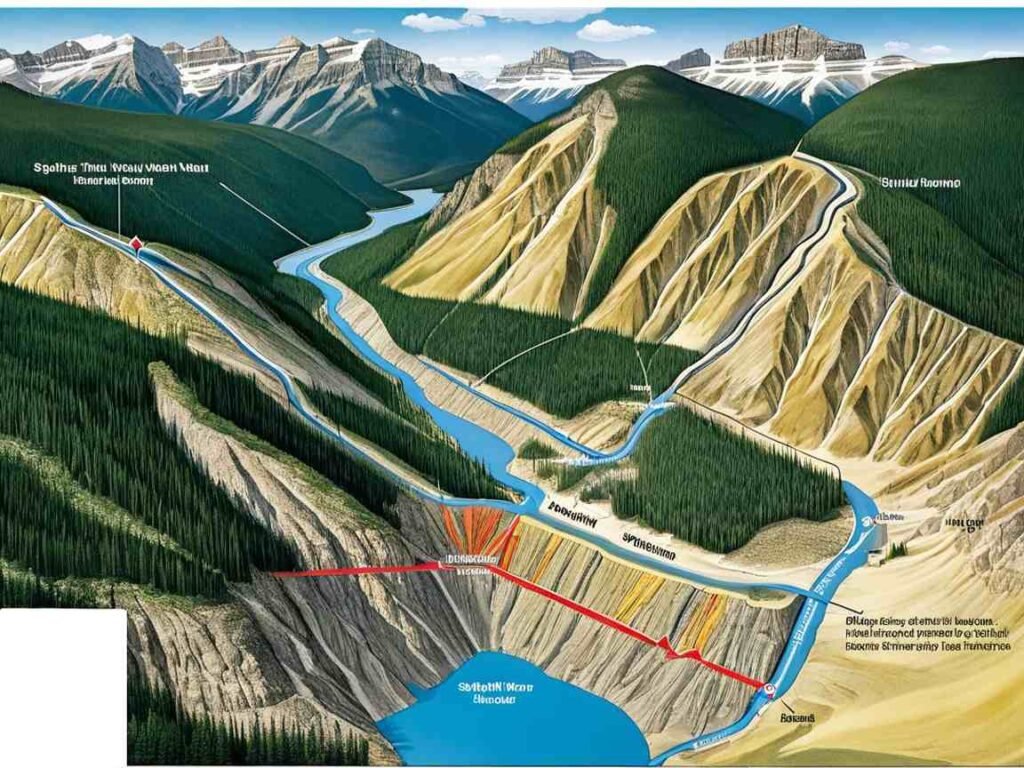
Banff Hot Springs Today: A Snapshot
Wondering what the hot springs are like now? Here’s a quick look at their current state within the History of Banff Hot Springs, Canada.
- Banff Upper Hot Springs
- Open daily, offering a pool kept at 37-40°C (98-104°F).
- Features stunning views of Mount Rundle and Cascade Mountain.
- Cave and Basin National Historic Site
- No swimming allowed, but it’s an educational hub with exhibits and trails.
- Home to the endangered Banff Springs Snail.
- Visitor Numbers
- Over 300,000 people visit the Upper Hot Springs annually.
- It’s a must-do for Banff National Park tourists.
- Accessibility
- ROAM Transit connects downtown Banff to the Upper Hot Springs.
- Limited parking encourages eco-friendly travel.
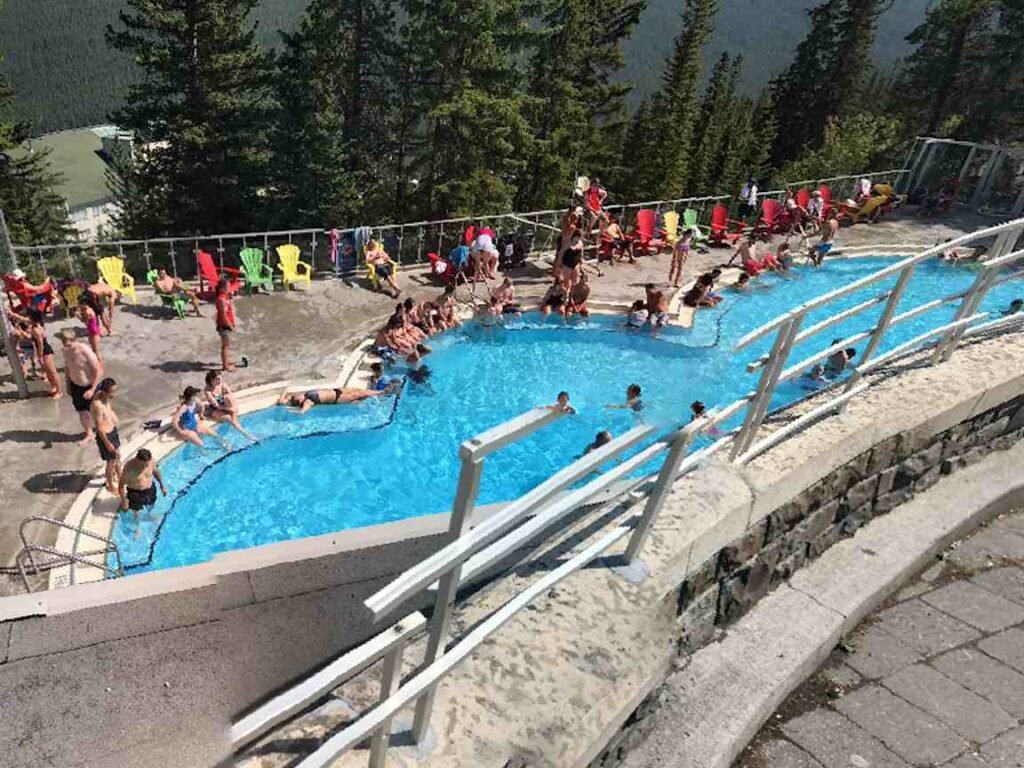
Challenges Faced in the History of Banff Hot Springs
The journey wasn’t always smooth. Here’s a table of major challenges in the History of Banff Hot Springs, Canada, and how they were addressed.
| Challenge | Details | Solution |
|---|---|---|
| Ownership Disputes (1880s) | Multiple claims after the 1883 discovery. | Government created the Hot Springs Reserve. |
| Fires (1901, 1931) | Grand View Villa destroyed twice. | Rebuilt, later acquired by the government. |
| Low Winter Flow | Natural flow drops in cold months. | Municipal water added since the 2000s. |
| Environmental Impact | Tourism strains the ecosystem. | Strict conservation by Parks Canada. |
Fun Facts About the History of Banff Hot Springs, Canada
Let’s lighten things up with some intriguing tidbits you might not know about the History of Banff Hot Springs, Canada.
- Highest Hot Spring in Canada
- At 1,585 meters (5,200 feet), the Upper Hot Springs tops the list.
- Banff Springs Snail
- This tiny endangered species lives only in Sulphur Mountain’s springs.
- It’s a quirky footnote in the site’s ecological history.
- Healing Hype
- Early visitors drank the water, believing it cured everything from syphilis to stiff joints.
- Science later debunked most claims, but relaxation stuck.
- Royal Visitors
- King George VI and Queen Elizabeth visited in 1939, adding royal flair to the tale.
How to Explore the History of Banff Hot Springs Today
Planning a visit? Here’s a practical list of ways to dive into the History of Banff Hot Springs, Canada, firsthand.
- Visit Cave and Basin National Historic Site
- Explore exhibits, films, and the original cave.
- It’s a short walk from downtown Banff.
- Soak at Banff Upper Hot Springs
- Rent a historic swimsuit for a retro vibe.
- Take in the views while relaxing in the pool.
- Ride the Banff Gondola
- Head up Sulphur Mountain for a bird’s-eye view of the springs’ setting.
- Learn more at the summit interpretive center.
- Hike Nearby Trails
- Trails around Cave and Basin offer history and scenery.
- Look for signs explaining the springs’ past.
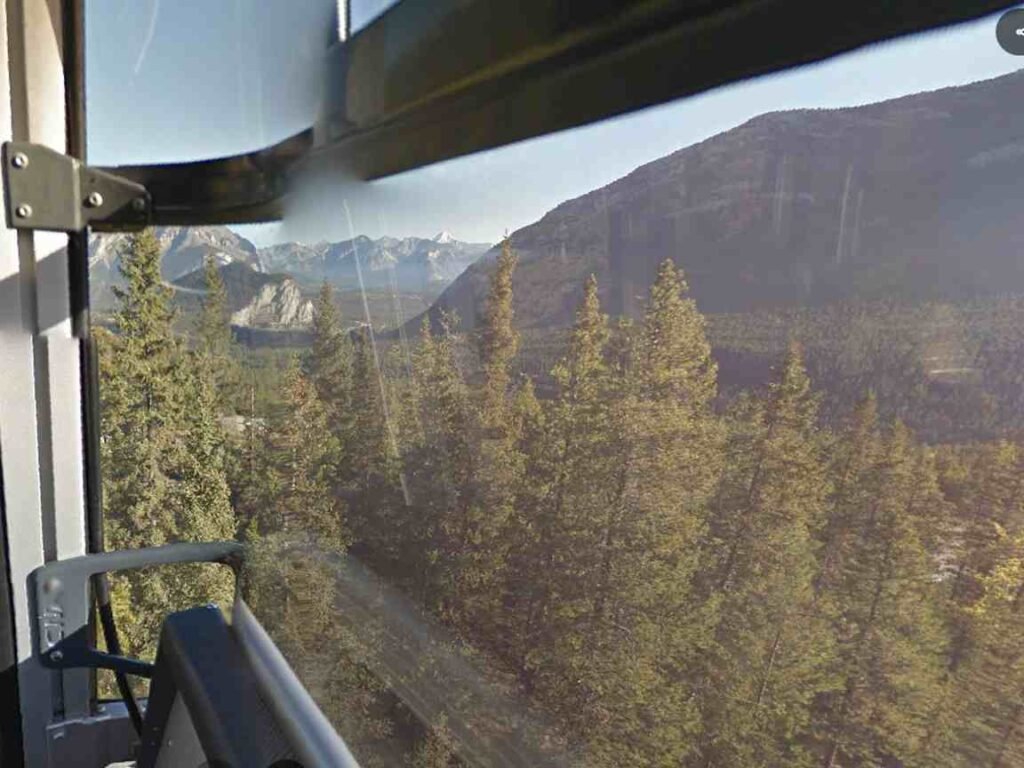
Comparing Banff Hot Springs to Other Canadian Hot Springs
How do Banff’s springs stack up? Here’s a table comparing them to other notable Canadian hot springs, rooted in the History of Banff Hot Springs, Canada.
| Hot Spring | Location | Temperature | Unique Feature | Historical Note |
|---|---|---|---|---|
| Banff Upper Hot Springs | Banff National Park | 37-40°C | Highest elevation in Canada | Sparked Canada’s first national park. |
| Radium Hot Springs | Kootenay National Park | 39-44°C | Odorless water with radon traces | Developed in the 1920s. |
| Miette Hot Springs | Jasper National Park | 54°C (cooled) | Highest mineral concentration | Opened to public in 1938. |
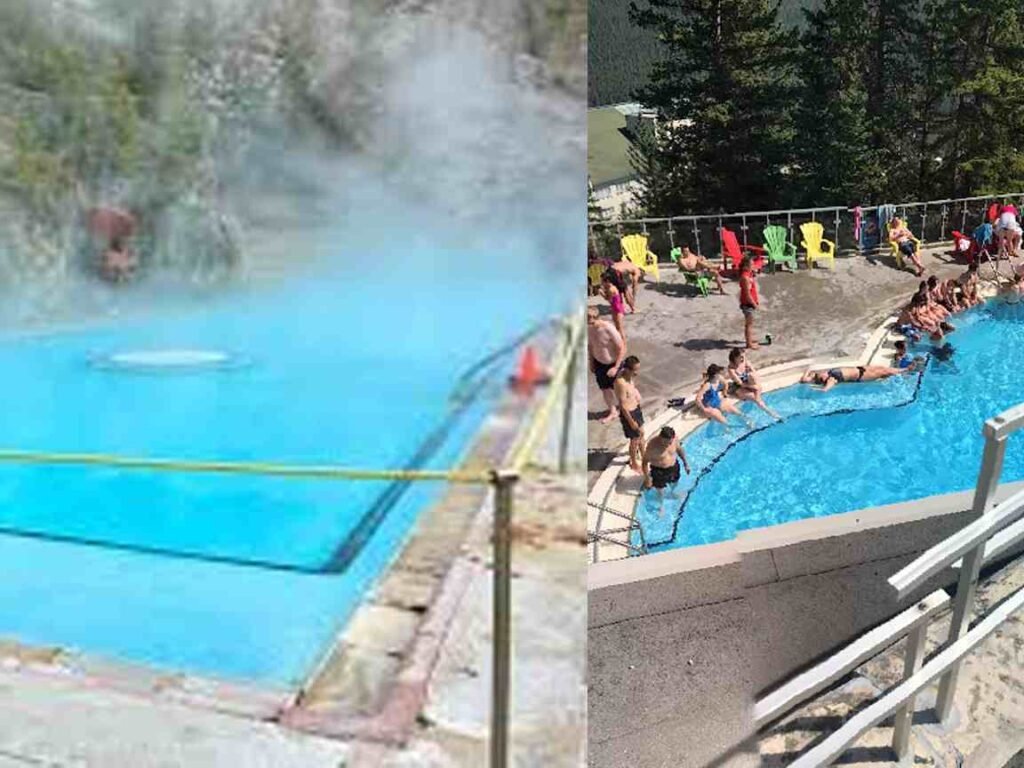
Personal Anecdote: My Visit to Banff Hot Springs
Last summer, I finally checked the Banff Upper Hot Springs off my list. After a long day hiking Johnston Canyon, sinking into that warm, mineral-rich pool felt like a reward from nature itself. The steam rising against the cool mountain air, with Mount Rundle looming in the distance—it’s hard to describe how peaceful it was. I even chatted with a local who shared stories about the springs’ past, like how folks used to line up for hours in the early 1900s just to dip their toes in. That blend of history and relaxation? Totally worth the trip.
Future of Banff Hot Springs: What’s Next?
Looking ahead, the History of Banff Hot Springs, Canada, continues to evolve. Parks Canada is focused on sustainability, balancing tourism with preservation. Plans include upgrading facilities to reduce environmental impact and enhancing educational programs at Cave and Basin. With climate change affecting water flow, there’s also talk of innovative water management. The springs’ legacy as a national treasure seems secure, but adaptation will keep them thriving for future generations.
Conclusion: A Living Legacy
The History of Banff Hot Springs, Canada, is more than a timeline—it’s a living story of discovery, resilience, and natural beauty. From Indigenous reverence to a railway workers’ find, and from early bathhouses to modern spas, these springs have shaped Banff National Park and Canada’s identity. Whether you’re soaking in the Upper Hot Springs or exploring Cave and Basin, you’re stepping into a piece of history that’s still unfolding. Next time you’re in Banff, take a moment to appreciate how this geothermal wonder sparked a conservation movement that echoes worldwide.

